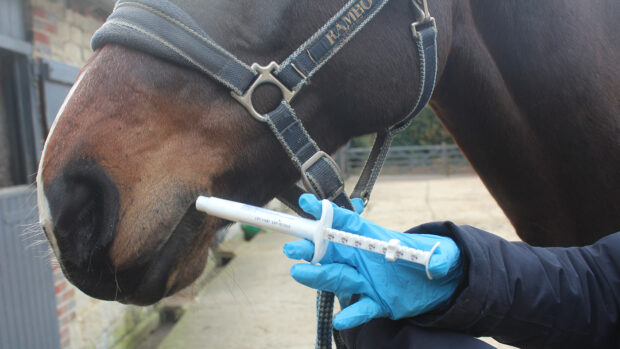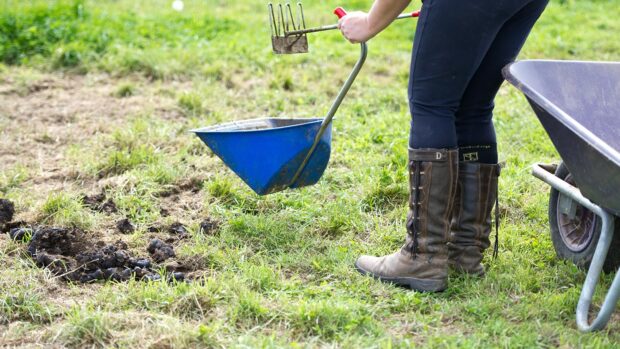Spring has finally sprung — show schedules are out, bridleways are drying off, fields are beginning to turn green, and all is right with the world.
But now the days are longer and brighter, and your horse is out more, it’s time to look at the damage winter has wreaked and put it to rights…
1. Clean, repair and proof horse rugs
Sighing with relief at no longer having to wrestle with muddy heavyweight turnouts, you can send those off to be cleaned and proofed ready for next year and get your lightweights out instead. If you haven’t done it already, these will also need to be checked for tears, mended, cleaned and proofed. Now’s a good time to wash your lightweight stable rugs, summer sheets, fleeces and coolers ready for the season, too. Better get on with it.
2. Out with the old, in with the new
If your horse has spent those long winter nights in his stable trying to destroy his haynets and buckets (well, everyone needs a hobby) then chuck out the ones that are completely beyond repair. While you’re at it, why not get the puncture repair kit out and sort out that flat wheelbarrow tyre, re-attach the broom head with gaffer tape so it doesn’t fall off every time you sweep the yard, and replace the fork-head that lost a prong every time there was a frost? If you’re feeling brave, you could even try to persuade your yard-mates to club together with you to buy new ones.
3. Get your saddle checked
Your horse may well have changed shape over winter, and with the competition season looming, it’s a good idea to get your saddle checked to ensure he’s comfortable and ready for the task ahead. Now would be a good time to get his teeth and back checked, too.
4. Spring-clean those stables
With your horse out more, you can finally blitz the stable he’s been living in all winter. Remove any rubber matting and give it a good scrub, and hose the stable down with a pressure washer together with a good disinfectant — make sure it’s animal friendly, non-toxic and safe to use with rubber matting (if necessary.) Safe4disinfectant is used by vets and has DEFRA approval (www.safe4disinfectant.com), or you could try Fieldguard’s Green Gloop, which is harmless to animals and environmentally friendly.
5. Get your fields summer-ready
Consider chain-harrowing your pasture to remove any dead grass, even poached areas, and allow the soil to be aerated. According to Cotswolds Grass Seeds’ pasture management calendar, March/April is also the time to decide whether your paddocks could benefit from over-seeding or re-seeding, and to apply fertiliser (slow-release is best as too much nitrogen can cause high levels of protein in the grass, which is not ideal for laminitic horses.) Visit www.cotswoldseeds.com for more information. The BHS recommends rolling to flatten any poached areas in spring, and taking action against weeds and poisonous plants. Download their PDF on pasture management from www.bhs.org.uk.
6. Test for tapeworm
If you follow an interval worming programme (the administration of specific anthelmintic treatments at set intervals throughout the year), then March is the time to dose for tapeworm and other routine worms. Due to the problem of increased wormer resistance among horses, the BHS guidelines on worming now recommend targeted strategic dosing based on worm egg counts instead of interval worming, with worm (faecal) egg counts being performed every eight-10 weeks. However, as the guidelines point out: “Tapeworms are not detected by routine worm egg counts, so a tapeworm test (either through blood or saliva) should be carried out in spring and autumn.” Download their PDF on worm control from www.bhs.org.uk for more information.
Like this? You might also enjoy reading these:
9 reasons we can’t wait for spring
12 signs it (might be) nearly springtime
My winter fields are trashed: what can I do?
7. Clean out your water trough
It’s a chore that should be tackled regularly but is easily forgotten, so add it to your horsey spring-cleaning list. Google it, and you’ll find various suggestions online for keeping your horse’s water trough clean and fresh. These suggestions range from adding cider vinegar to goldfish (yes, really!), but your safest and best solution for a clean trough is good old fashioned elbow grease. Drain the water out, get a stiff scrubbing brush, and scrub the algae and scum out of the trough before refilling it. Obviously, don’t use bleach or any toxic cleaning agents. Your horse will thank you for it.





